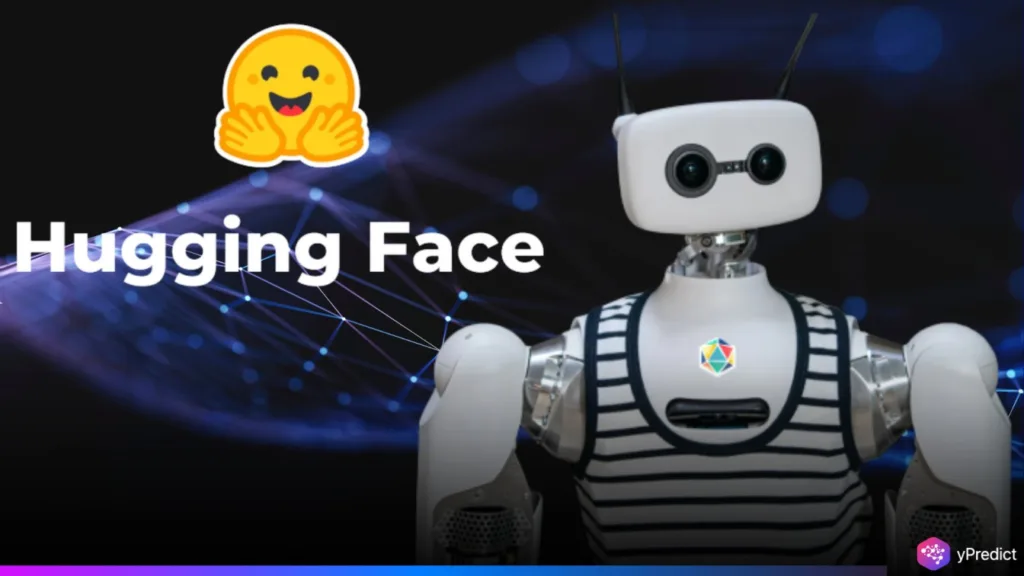
Hugging Face, the leading open-source AI company, has made a groundbreaking entry into the robotics industry with the launch of two innovative humanoid robots. Announced shortly after it acquired French robotics startup Pollen Robotics, the move marks a strategic expansion into physical AI systems. These open-source, affordable robots are designed to democratize robotics development, enabling researchers, educators, and developers to build, customize, and experiment with advanced robotic systems.
Hugging Face Robots Aim to Democratize AI Hardware
Hugging Face has introduced two new humanoid platforms, HopeJR and Reachy Mini. Designed to democratize access to advanced robotics, both models emphasize affordability, transparency, and open-source innovation, signaling a new era in the intersection of artificial intelligence and physical systems.
HopeJR is a full-scale humanoid robot with 66 actuated degrees of freedom, allowing it to walk and manipulate objects using its arms. It provides a comprehensive yet accessible platform for researchers, educators, and developers. Priced at approximately $3,000, it aims to provide an affordable platform for research and development.
Complementing it is Reachy Mini, a desktop-sized interactive robot designed for testing AI applications. It can move its head, speak, and process auditory input, making it an ideal tool for communication-focused development settings. Reachy Mini, priced between $250 and $300, lowers the entrance hurdle for anyone interested in integrating AI and robotics.
These new robots reflect Hugging Face’s core belief in open-source accessibility. The company aims to counter the dominance of proprietary robotics by fostering transparency and collaboration. CEO Clément Delangue emphasized that open systems are especially crucial when machines operate in complex, real-world environments.. While talking about the importance of employing an open-source approach in robotics, he said,
When considering physical devices performing tasks in various environments, the level of trust and transparency I require is significantly greater than when interacting with software on my laptop.
By making both the hardware and software open-source, Hugging Face ensures that users can study, modify, and rebuild the robots freely, promoting innovation across academic, commercial, and hobbyist communities.
How Pollen Robotics Powers Hugging Face Robots’ Strategy
The development of HopeJR and Reachy Mini follows Hugging Face’s acquisition of French robotics startup Pollen Robotics in April. Known for creating Reachy 2 and advocating open, ethical robotics, Pollen brought deep technical expertise and a shared vision for democratized robotics. CEO Delangue credited the Pollen team for equipping Hugging Face with the capabilities needed to bring these humanoid robots to life.
Pollen Robotics, founded in 2016 by Matthieu Lapeyre, Alice Coucke, and Pierre Rouanet, has long championed accessibility in robotics through open design. Their integration into Hugging Face reinforces the company’s ambition to lead the next wave of AI-powered physical systems.
Expanding the Robotics Ecosystem
These launches are not isolated events. They are part of Hugging Face’s broader push into AI-driven robotics, which gained traction with the 2024 launch of LeRobot, a comprehensive platform that provides open AI models, tools, and datasets targeted to robotics. Since then, the company has steadily expanded its footprint in the field.
It released an improved version of the SO-101, a 3D-printed, programmable robotic arm designed in partnership with The Robot Studio. Hugging Face collaborated with AI firm Yaak to supplement the LeRobot platform with training data for self-driving systems. The company has also actively worked with the open-source community to co-develop domestic robots and low-cost robotic arms for educational and exploratory purposes.
Conclusion
While the waitlist grows and the first units are ready for deployment, one thing is clear: Hugging Face is no longer merely a leader in natural language processing or open-source AI; it is rapidly becoming a vital force in creating the future of human-centered, transparent robotics. Through thoughtful planning, creative alliances, and an uncompromising dedication to transparency, the firm is establishing the basis for a world where sophisticated robotics is not just powerful, but also inclusive, ethical, and accessible to all.






